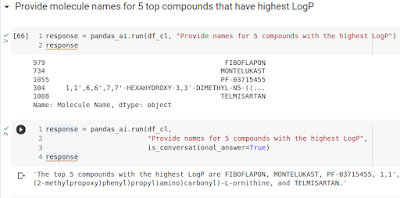Generating 3D compound structure using machine learning: testing Auto3D
Generating 3D structure of the compounds from prior knowledge is a
challenge. Machine learning models can be used to accurately predict 3D
conformers of small molecules and larger compounds (e.g. AlphaFold). GeoMol, TorsionNet and alike methods are basically taking
well-known knowledge-based methods for 3D generation on the next level. But none of the published models can be
reproduced without any pretraining and/or easy to install, except for Auto3D.
Auto3D was developed in the group
of Professor Olexandr Isayev and published in 2022 including code.
Auto3D automatically generates conformational
space further optimized by atomistic neural network potentials (NNPs) such as
ANI or AIMNet (also by the Isayev Lab). Tautomers and isomer enumeration are in
my opinion is not necessary as part of the package, but they are nice addition.
I tested for 10 random drug-like
compounds from ChEMBL. For whatever reason running algorithm on CPU gave me
abysmal running time of 450 seconds per compound on average, compared to 10
seconds on GPU. Not sure why… Anyway, Google Colaboratory notebook can be found
here.
All generated 3D conformers look perfect and zero clashes between the atoms.
Algorithms like this will have a huge impact on bringing 3D into the compound generation and general CADD approaches. There is still need to speed up the process and add water phase for conformer generation (gas phase only at the moment), but water phase is already in progress and speeding it up will be achieved very soon I am pretty sure.



Comments
Post a Comment